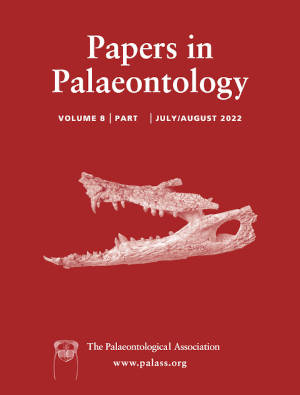Article: A phylogenetic approach to the study of the evolution of Hypermecaspididae (Olenida, Trilobita)
Publication: Papers in Palaeontology
Volume:
8
Part:
3
Publication Date:
2022
Article number:
e1433
Author(s):
Daniela S. Monti, M. Franco Tortello, and Viviana A. Confalonieri
DOI:
10.1002/spp2.1433
Abstract
Abstract Hypermecaspidinae (Trilobita; Olenidae) constitutes a monophyletic clade but its internal relationships are unknown and its phylogenetic position with respect to the rest of Olenida has recently been questioned. In order to propose a phylogenetic hypothesis, and to resolve the status of the group, a cladistic analysis of the hypermecaspidinids was performed. One hundred characters (28 quantitative and 72 qualitative) of holaspid morphology were coded for 30 taxa (18 Hypermecaspidinae). Two groups of analyses were performed considering the percentage of missing data. For each group of analyses, discrete partition was treated as totally unordered or as with some characters (describing intensity, position or shape of certain structures) ordered. The analyses were performed with TNT using maximum parsimony and implied weighting as optimality criteria. Hypermecaspididae constitutes a monophyletic family within Olenida, and is the sister group of pterocephaliids. In light of the present analysis, an emended diagnosis of the family is provided. The results suggest that ‘Tropidopyge’ broeggeri should be reassigned to Hypermecaspis. Hypermecaspidids would have originated in the late Furongian and rapidly diversified across different parts of the world in the Early Ordovician. With the exception of H. armata and H. chamarrensis, the species of Hypermecaspis have a proportionately large pygidium with a wide doublure and a distinct postaxial field. An evolutionary trend toward an increase in the size of these characters is observed in the genus. The cranidium shows a tendency toward enlargement of the glabella and the palpebral lobes, together with a narrowing of the interocular genae.
